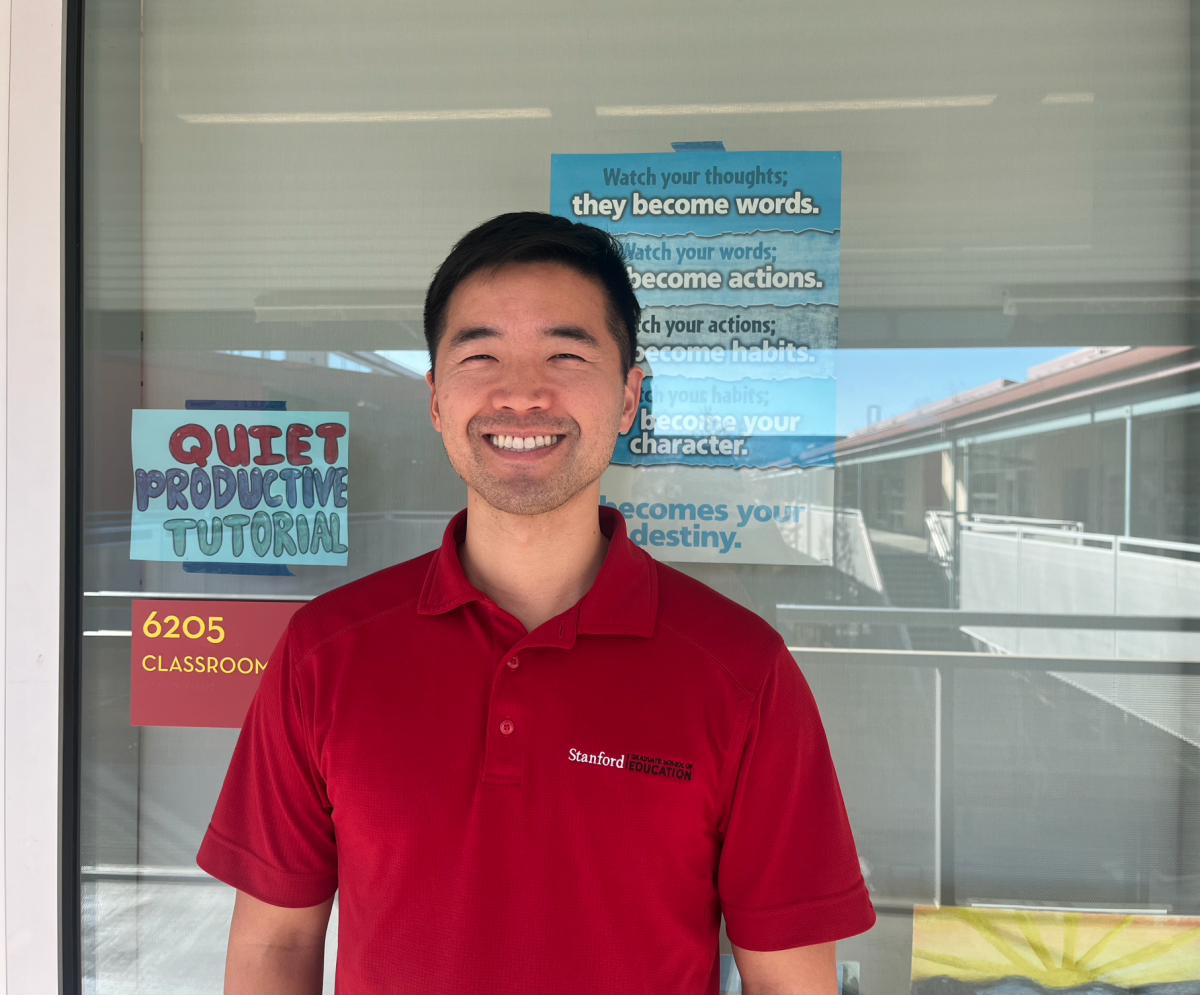From only offering boys sports at the time of its opening in 1958, Cupertino High School’s athletic culture and accomplishments have changed dramatically over the years. In its formative years, Tino’s sports teams consisted of baseball, basketball, cross country, football, golf, water polo, wrestling and track and field. Tennis, swimming and soccer were among the many sports added to Tino’s roster as the school grew. This list of offered sports continues to change, with clearance to add a girls flag football team in the coming years, if time and space allows.
Throughout the 1960s, these sports had many early successes, with golf and wrestling winning several league championships and producing eight NCS and CCS wrestling champions throughout the decade.
With the passing of Title IX in 1972, Tino saw the birth of its first girls sports teams, including volleyball, tennis and swimming teams. The 70s continued as a successful time for Tino sports, dubbed the golden era of CHS boys sports. During this time, the school saw 20 individual CCS section titles and eight CCS team championships between 1971 and 1976, a feat deemed even more impressive back then, as all schools competed in one division, contrary to the six today.
Although the following years saw fewer sports teams win championships, they continued to grow, develop and bring in new accomplishments. In 1987, Tino saw its first female athlete win a CCS championship, Melanie Weispfenning on beam in gymnastics. This first for girls sports teams was followed by girls soccer in 1999, which became the first team to win a CCS team championship.
In 2005, the boys varsity basketball team claimed its first league title in 10 years and in 2006, they went on to become the first team to win two consecutive league titles in 20 years.
The following years, between 2013 and 2017, became known as the golden era of girls sports, particularly in 2015 when five teams went on to serve in league championships and six different athletes took the top spots at CCS podiums.
In recent years, individual sports such as tennis, badminton, track and field and swimming have taken the reins. In 2022, the girls tennis team placed first in CIF Northern California Regional Championships and senior Gayathri Krishnan took home Tino’s third girls tennis CCS singles championship in four years. Boys tennis followed in 2023 with the team winning CCS championships and sophomore Ethan Chung and senior Tommy Kim winning doubles. Football coach and PE teacher Chris Oswald attributes this to the greater opportunities offered at a young age for individual sports, and the simplicity in training one student instead of a whole team,
“If kids are being told to focus on something when they’re young [like] tennis or badminton, as they get older, it’s easy to continue that pattern,” Oswald said. “At the same time, we can look at the Little League baseball around here [and] it’s gone. You can tell that it’s affecting us at the younger ages [and] it trickles up to us to where we are trying to survive seasons, instead of having these teams almost brought to us.
Although the accomplishments of Tino’s sports teams have played a big part in athletics at Tino, the environment and athletes are crucial to their success. These aspects of athletics have changed drastically over the years, recently resulting in many commitment issues, as shared by Craig Ellegood, PE teacher and boys basketball coach who began at Tino in 1999.
“We have a lot more issues with kids not understanding the commitment to a sport [and] team,” Ellegood said. “I also think part of that is their parents don’t understand [that] if you’re going to play on a team, you don’t get to just randomly leave. It’s not your schedule, it’s the team’s schedule.”
Also in comparison to years past, Oswald mentions the decreasing interest in sports, with less students wanting to try out.
Said Oswald, “We survive seasons. They’re not knocking our door down, we’re knocking on their door down and saying, ‘please come try this.’”
Oswald also attributes lower participation as a result of the Covid-19 quarantine.
“[Students realized] I have all this time and I can play seven hours of video games and still [finish] my homework,” Oswald said. “Kids [were not] going out and playing [sports] for two years and they broke that habit of going to practice.
However, these issues do not apply to everyone, as Ellegood also notes that many students are still passionate and committed to their sports.
In addition, coaches also have the responsibility to hold their athletes accountable.
Said Ellegood, “I think as a coach, you have to have some expectations of how you’re going to run your team and program. There’s going to be consequences and […] everyone [has] to be on the same page and putting in the same time.”
On the topic of coaches, Oswald recalls the different roles teachers now have in coaching. Back in the 50s and 60s, it was common for all PE teachers to coach three different sports, year-round. Nowadays, fewer teachers are coaching, and they are much harder to find and even harder to keep, often only staying for one year.
Outside of these struggles, Ellegood highlights the recent accomplishments of sports teams and the successes achieved beyond just winning.
“I don’t think you always measure success on winning and losing,” Ellegood said. “[It’s about students] maximizing their season and participation [and] coaches working together to get the most out of [athletes] and also maximizing the ability of the team.
Compared to years past, increased technology and applications have made it easier for athletes to study their opponents, contributing to their success. Many of Tino’s sports, such as football and soccer, use Huddle, a video-sharing app that records other schools’ games. It allows teams to break down their opponents’ plays and strategies, which helps athletes better understand what they are up against. It also helps people with less experience grow faster as players.
Said Oswald, “I used to be up until two or three o’clock in the morning, taking my film and making copies so I [could] give it to people. [With Huddle,] I can [now] share it with whoever I want to share it with and [it has] saved me countless hours as a coach.”
Although it’s hard to predict what the future of Tino athletics will look like, Oswald wouldn’t be surprised to see some sports die off while others like cricket and lacrosse find their way in. Conversely, Ellegood hopes that increased accountability and commitment will lead to a better athletic world.
Said Ellegood, “My wish or hope would be that we would all help each other try to hold the line in terms of accountability [and] to get athletes to perform at their best level for themselves, but also for their team.”







